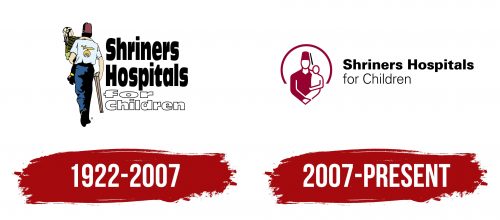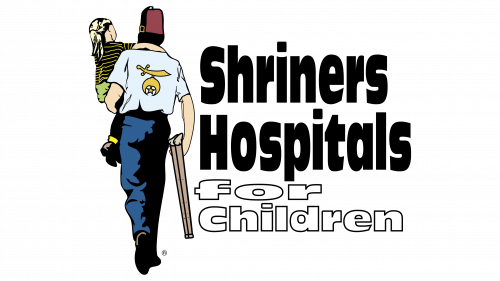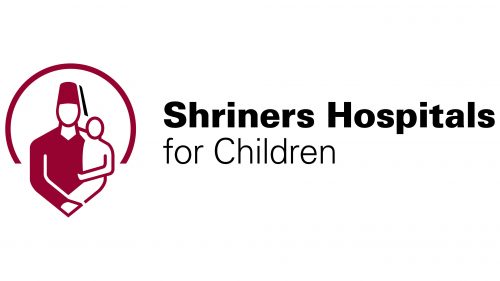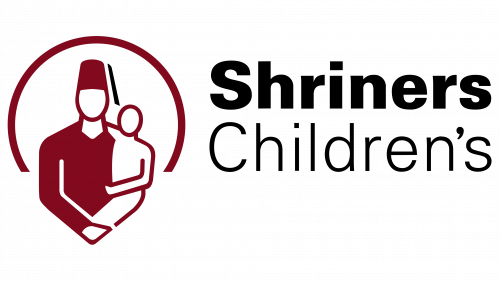 Shriners Hospitals for Children Logo PNG
Shriners Hospitals for Children Logo PNG
The Shriners Hospitals for Children logo symbolizes the care and attention that young patients receive in the network of medical institutions. The charitable organization covers all the expenses for treating sick children, which is why its emblem is associated with the highest degree of humanitarianism.
Shriners Hospitals for Children: Brand overview
The Ancient Arabic Order of the Nobles of the Mystic Shrine, also known as the Shriners organization, met for their Imperial Session in Portland, Oregon, in 1920, which marked the beginning of the history of Shriners Hospitals for Children. Freeland Kendrick of Texas discussed building a free hospital for kids with orthopedic issues.
The concept was well received, and in 1921, a committee was established to assess the project’s viability. After extensive investigation, the committee reported its findings at the 1922 Imperial Session in San Francisco. The establishment of the network of children’s hospitals was a momentous decision.
The first hospital opened in Shreveport, Louisiana, on September 16, 1922. This pediatric orthopedic institution treated children with clubfoot, polio, and other conditions. It was a novel practice then, but the hospital treated children from low-income families for free.
Numerous other hospitals were opened across the nation in the ensuing years. By 1925, seven United States and Canada locations were part of the network.
The organization faced many difficult problems during the 1930s. The Great Depression badly damaged its finances, but the hospitals carried on and cared for underprivileged children.
Children’s burn injuries were added to the services provided in the 1950s. 1962, the first burn hospital for children opened in Galveston, Texas. The decision was made in response to the increasing need for pediatric burn patients to get specialized care.
Significant advances in medical technology were made in the 1960s and 1970s, and hospitals eagerly embraced these new techniques. Novel treatments for scoliosis, spinal injuries, and other complicated orthopedic diseases were developed during this time.
In 1980, the network expanded its purpose to include caring for children with cleft lip and palate. This decision was made after it was discovered that many children with these disorders also had related orthopedic issues.
The organization’s research endeavors significantly increased during the 1990s. Specialized research facilities were founded to investigate tissue regeneration, create novel burn treatment techniques, and investigate the genetic underpinnings of orthopedic disorders.
In 2001, the hospitals formally changed their names to Shriners Hospitals for Children to better reflect their goal and intended audience.
The organization shifted its emphasis to treating pediatric spinal cord injuries in 2005. Specialized facilities were established and furnished with cutting-edge equipment for rehabilitation and research in this domain.
The hospitals encountered severe financial challenges in 2009 during the global financial crisis. To ensure long-term financial viability, the hospital network was restructured.
The 2010s were a time of digitization and modernization for the organization. Due to the implementation of telemedicine and electronic medical records, children in remote locations now have greater access to expert treatment.
The hospitals celebrated treating their one-millionth patient in 2015, a momentous occasion highlighting the organization’s extensive influence on children’s lives around the globe.
The “First Lady’s Program” was introduced in 2018 to promote pediatric healthcare and raise money to support its mission.
2019 saw the organization carry out its goal of offering kids top-notch medical treatment. By expanding its telemedicine offerings, the organization made it possible for patients living in rural places to consult with specialists without traveling far. For many families, this innovation greatly increased the accessibility of medical treatment.
2020 was a significant event for the organization—the 100th anniversary of the foundation. The hospitals’ contributions to pediatric medicine were highlighted, and several activities and awareness initiatives marked this occasion.
Significant advancements were made in research endeavors in 2021. The organization further cemented its leadership position in pediatric medicine by publishing the findings of significant research on managing pediatric orthopedic illnesses and burns.
In 2022, the hospitals opened new, specialized clinics in several of their locations as part of an expansion of their effort to treat rare disorders. This made it possible to provide more specialized care for children with severe medical illnesses and uncommon genetic abnormalities.
In 2023, the organization introduced a brand-new educational program. To increase public knowledge of children’s health and illness prevention, the group started hosting a series of webinars and online seminars for parents and medical professionals.
Regardless of the family’s financial situation, the primary goal is to provide children with high-quality medical care. The organization has continued to grow and adapt to new technology and patient demands.
Meaning and History
What are Shriners Hospitals for Children?
It is a network of not-for-profit medical facilities across North America that provides specialized pediatric care. The organization specializes in treating children with orthopedic conditions, burns, spinal cord injuries, and cleft lip and palate, regardless of their ability to pay. The Shriners International fraternity founded these hospitals, offering comprehensive treatment, including surgery, rehabilitation, and support services. They are dedicated to research and education, striving to improve treatment methods and train healthcare providers in pediatric specialties.
1922 – 2007
The old Shriners Hospitals for Children logo is filled with symbolic elements that convey the essence of the charitable organization, showing its commitment to humanity and mutual assistance. These qualities are embodied in the image of a person carrying a small child in their arms. Both figures are faceless, as they are turned away from the viewer. However, small details give clues as to who they are.
- The man is wearing a red fez, the official headwear of Shriners International. The back of his blue shirt is adorned with the logo of the same Masonic organization: a golden scimitar, an inverted crescent, and a five-pointed star. Everything points to the fact that the man is one of the Masons who support the work of Shriners Hospitals for Children.
- The child is likely a patient of the network of medical institutions. This can be inferred from the man’s crutches and bandana, which suggests the child is undergoing treatment (for example, after surgery or chemotherapy). It seems the child cannot walk independently, which is why they are being carried.
The smaller Shriners International logo reminds us that this Masonic Society founded the nonprofit organization to treat children. The crutches, in turn, symbolize support, assistance, and improving quality of life. They reflect the primary mission of Shriners Hospitals for Children—to help young patients with orthopedic issues and spinal cord injuries, though the medical network’s specialization is much broader.
The drawing catches attention with its realistic style and vibrant colors, as the artists captured the natural skin tone, detailed the clothing, and made the red fez stand out. However, the accompanying text is done in black-and-white monochrome:
- Black is associated with reliability, seriousness, and professionalism;
- White creates a feeling of care, purity, and innocence.
These colors strike a balance between seriousness and humanity, the core qualities on which the charitable organization operates. The simple color palette complements the straightforward font, characterized by bold strokes and the absence of serifs. The logo uses two versions of a sans-serif typeface: one with vertically elongated letters (“Shriners Hospitals”) and another with compressed glyphs (“for Children”). Since each word is placed on a separate line, combining different styles makes the text more expressive.
2007 – today
The network of medical institutions needed a new visual identity that would reflect its commitment to progressive treatment methods. The previous emblem appeared outdated due to an unbalanced font, and the overly detailed drawing didn’t look good on small screens. The digital era required simplicity and clarity, so designers completely changed the Shriners Hospitals for Children logo, adhering to a minimalist style. However, they retained the old concept to keep the brand recognizable.
The organization’s primary symbol remains a person holding a child. Now, though, it is depicted from the waist up. The outline of the lower half of the pictogram resembles a heart—a sign of love, compassion, and tenderness. This visual represents the help that donors and doctors provide to sick children.
The drawing consists of geometric shapes in white and burgundy. Its style is so simple that the figures don’t even have faces—their heads are just empty ovals. This was done intentionally to avoid associating the logo with specific images. Anyone could be in the place of the child, as the network of medical institutions treats thousands of young patients every year.
The adult figure remains anonymous as a member of the secret Shriners Society, which owns the charitable organization. One distinctive detail points to their membership in the Masonic brotherhood—the tall headwear with a black tassel at the end. This fez has become one of the key symbols of Shriners International.
Behind the human figures, a rising sun represents hope and the beginning of a new life. It is rendered in a minimalist style, consisting only of a semicircle resembling an inverted letter “C.” Both the sun and the figures are painted in two colors:
- White symbolizes openness, purity, calm, and safety;
- Burgundy represents energy, solidity, confidence, and prosperity.
The accompanying text is entirely black. The designers deliberately chose this color to emphasize the seriousness and professionalism of the medical institutions. For clarity, the brand’s long name is split into two lines: “Shriners Hospitals” on top and “for Children” below. Both lines use a geometric sans-serif font, with the first two words in bold and the second part in thin letters. The visual contrast enhances the sense of dynamism, evident in the diagonal cuts and rounded shapes.






